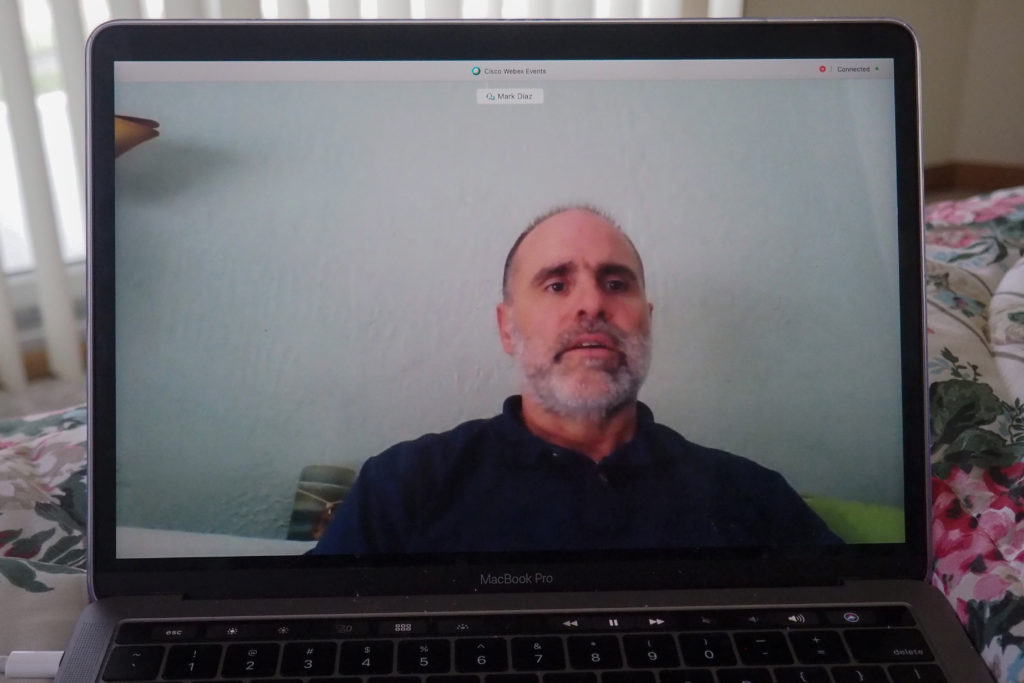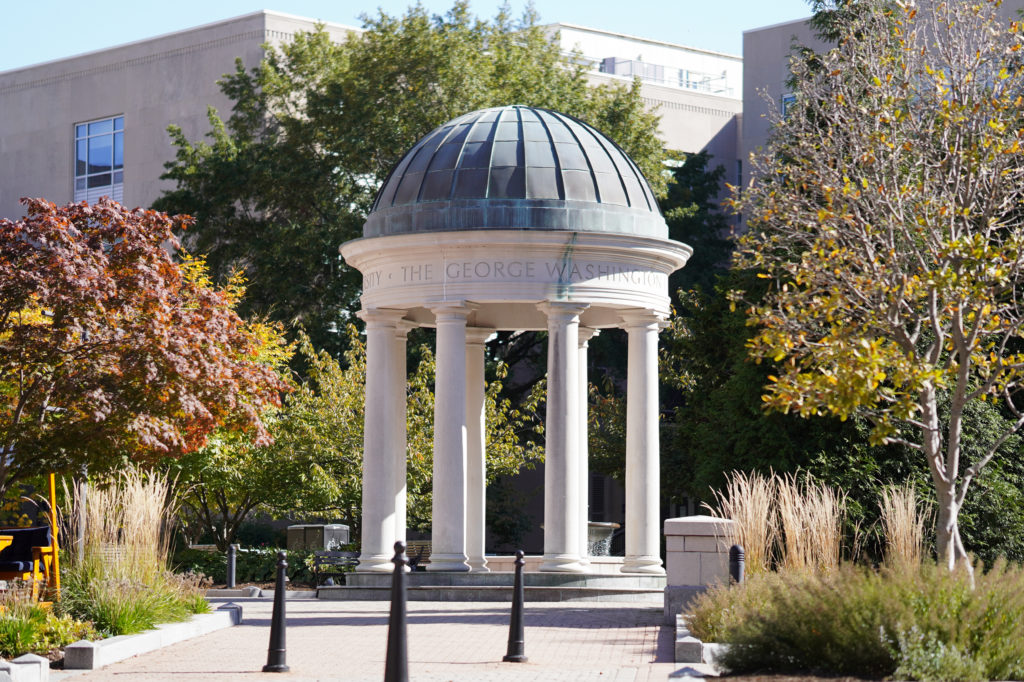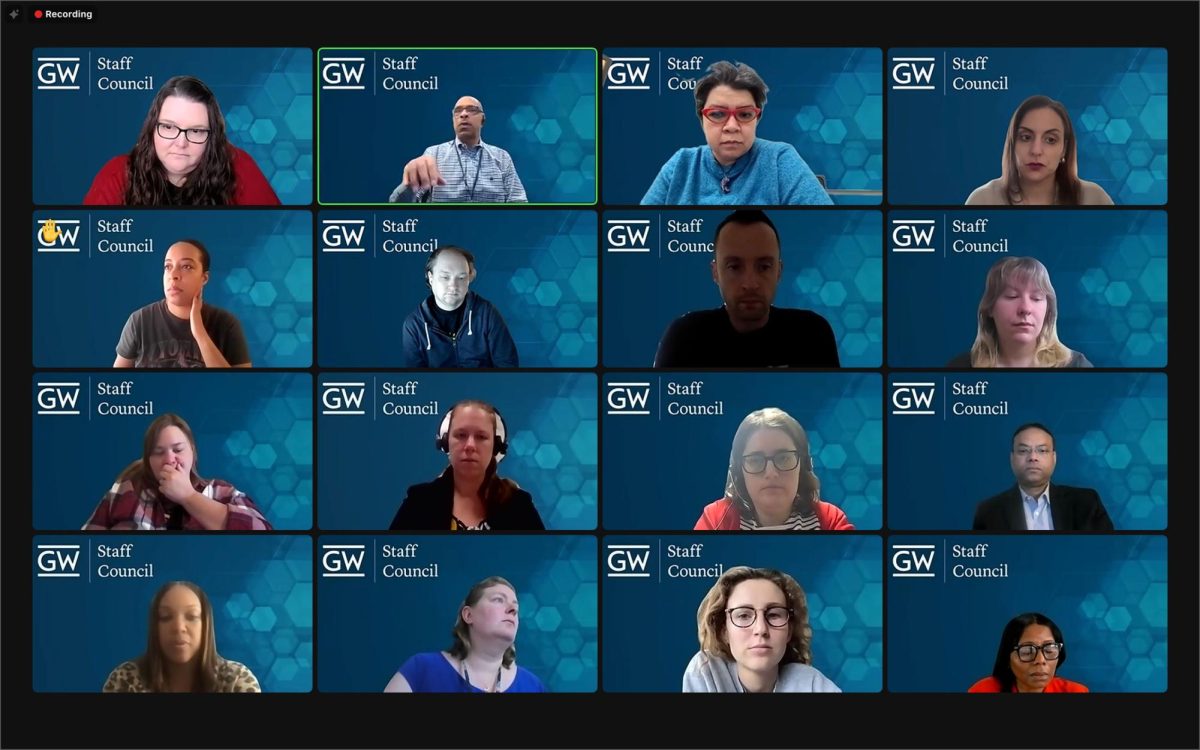Officials said they plan to spend nearly $25 million during next fiscal year to prevent the spread of the novel coronavirus once students return to campus.
Executive Vice President and Chief Financial Officer Mark Diaz said at a Faculty Senate meeting Thursday that he projects the University to spend $8.5 million for COVID-19 testing and contact tracing, $1 million for enhanced cleaning, $4 million to develop and maintain quarantine facilities, $3.6 million for “classroom modifications” and $7 million in additional expenses. Other top officials presented details on fall planning efforts, including enrollment and academic updates.
Diaz and University President Thomas LeBlanc said officials are considering a variety of expense reductions, including layoffs and personnel decisions, as GW faces a potential annual revenue shortfall of between roughly $86 million and $320 million.
“The degree of uncertainty for this exercise is extraordinary and unprecedented, and at my vantage point it’s very unsettling,” Diaz said. “There are no sacred cows in this exercise. We are taking a surgical approach rather than a blunt instrument.”
Diaz shared with faculty senators the University’s financial projections for the coming year, which project an annual shortfall in undergraduate tuition revenue between $45 million and $198 million, depending on when students return to campus.
He added that even if students return to campus as scheduled in August, GW could still see a shortfall in its projected revenues from auxiliary enterprises of more than $11 million next year.
Diaz said officials are conducting an administrative functional review of each budgetary unit, like GW’s colleges and departments, to identify target areas for restructuring or shared services. Administrators are also determining which functions are core and non-core, he said.
Fall instruction
Terry Murphy, the deputy provost for academic affairs, said officials are determining the capacity of each classroom with social distancing measures “as fast as possible” but will likely require an additional few weeks to complete. Each classroom will allow for six feet of space between each student and a six-foot “protection zone” for faculty, she said.
Murphy said administrators will clean classrooms at “regular intervals” and cleaning supplies will be available at any time.
She added that her team is also examining non-traditional spaces for instruction, including the basketball courts in the Lerner Health and Wellness Center and the Elliott School of International Affairs’ City View Room.
“As you can imagine, we’ve redrawn spaces for our classrooms, but we need more space,” Murphy said. “Our team has been out scouting every space available.”
Murphy said officials are also equipping additional classrooms with cameras and microphones to allow for remote learning. Since administrators do not have sufficient time to perform full installations of the equipment in many classrooms before the semester begins, much of the technology upgrades will be available in a “portable fashion” accompanied by workshops and resources for faculty, she said.
She added that her team will release faculty and student surveys this week to determine preferences for fall instruction. Officials are exploring remote options for faculty who do not want to teach in person even if students return to campus in August, Murphy said.
“I know this is hard for faculty because it’s hard to imagine how you’re going to teach your course if you can’t imagine your environment,” she said. “We’re working hard to get classes and classrooms matched up.”
Enrollment update
Provost Brian Blake said 2,421 incoming students currently have active deposits to attend GW next year, but a cross-campus team is monitoring an uncertain summer melt, which measures the percentage of students who ultimately decide to not attend the University after submitting an enrollment deposit. Although GW’s summer melt is about normal as of now, it is likely to be higher than the historical average of roughly 7 percent, he said.
“I think most of the students are in this wait-and-see mode,” he said. “Most of the action around melt happens deeper in the summer. I think there are students waiting to see if they can get visas.”
He added that graduate student commitments are down 15 percent for the summer and fall compared to last year, including a 34 percent annual drop in international student commitments for graduate programs.
“For me this is particularly disconcerting because we had anticipated $10 million more in graduate revenue above tuition pricing changes year over year,” Blake said.
He said he is “hopeful” that the gap will close as a result of student engagement efforts led by the Office of Student Success.
Reopening plans
Scott Burnotes, the associate vice president of safety and security, told The Hatchet Friday that GW officials heard back from D.C. officials about the University’s reopening plan, which was submitted to the District Monday.
“They contacted us with several questions,” he said. “We are in the process of providing them clarity on several topics.”
Burnotes said at the senate meeting that officials are developing an GW Reopen Operations Playbook that will provide more detailed guidance for University stakeholders beyond the plan submitted to the District.
“The D.C. plan is really viewed as the roadmap – very high-level, answering very specific questions and concerns that the District wanted us to answer,” he said. “The operations playbook is the turn-by-turn direction and the specifics.”
A team of more than 150 faculty, students and staff are currently reviewing a draft version of the playbook, and administrators will begin implementing the detailed plans on July 1 in preparation for the fall semester, he said.
Burnotes added that officials have identified a location with about 148 single rooms to quarantine students diagnosed or exposed to the coronavirus but did not specify where it is located.
He said officials considered sharing a quarantine facility with other D.C. universities, but most decided to develop their own facility. Administrators are still discussing a potential shared facility with The Catholic University of America, he said.
“That would come with a bathroom and a bedroom for someone to comfortably quarantine in there,” he said of the identified location. “If we commit to that, we just don’t know at any given time how many people will need it.”






